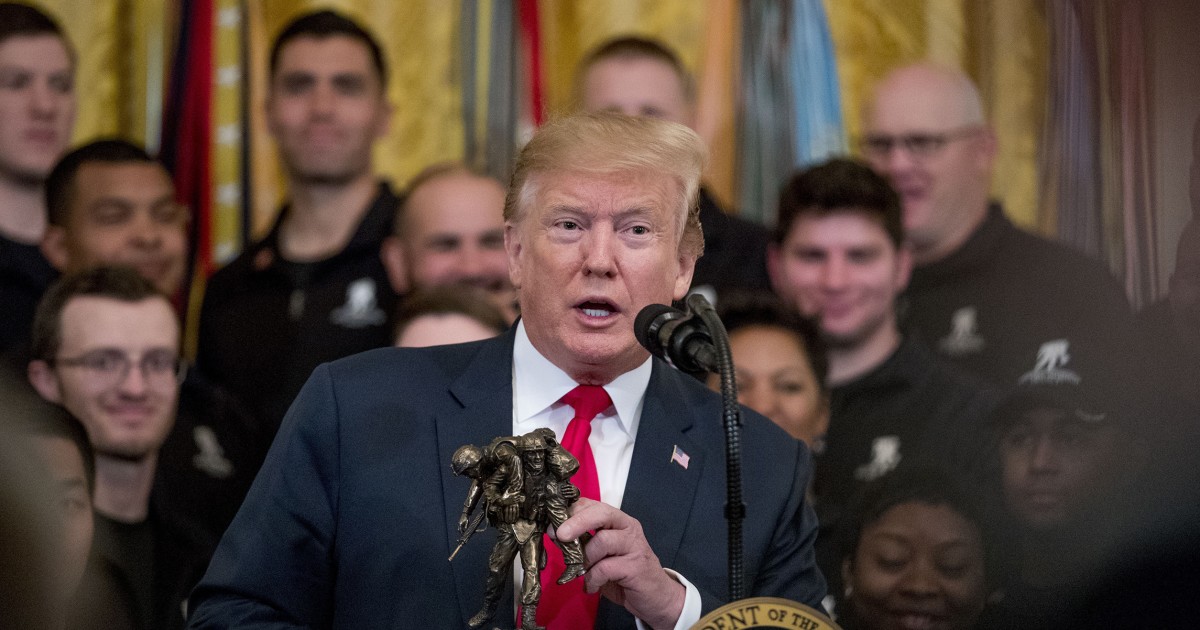Trump administration breaks campaign promise, purges 200,000 VA healthcare applications

“The current state of the Department of Veterans Affairs is absolutely unacceptable,” presidential candidate Donald Trump said when speaking at a rally on Oct. 31, 2015, in front of the retired battleship USS Wisconsin in Norfolk, Va.
“Over 300,000 — and this is hard to believe, and it’s actually much more than that now — over 300,000 veterans died waiting for care,” said Trump.
Trump’s strong condemnation of the Obama administration’s handling of the backlog of hundreds of thousands of veteran benefits claims made him the overwhelming choice for many veteran voters in 2016.
But after two years in the White House, the Trump administration has decided to execute a plan to purge 200,000 applications for VA healthcare caused by known administrative errors within VA’s enrollment process and enrollment system — problems that had already been documented by the Office of the Inspector General in 2015 and 2017.
In purging this massive backlog of applications, the VA is declaring the applications to be incomplete due to errors by the applicants, despite the OIG findings and in violation of the promise Trump made to fix the system. This purge has the dual effect of letting the VA avoid the work of processing the applications and absolving the agency of any responsibility for veterans’ delayed access to health and disability benefits.
Under the supervision of Dr. Richard Stone, the executive in charge of the Veterans Health Administration, VHA managers last November instructed the agency’s IT staff members to purge over 200,000 pending healthcare applications.
Such a profound decision to deny veterans benefits should have to come from someone higher up — the president or the Secretary of Veterans Affairs — not from a career bureaucrat who has not been elected or confirmed by the Senate.
This purge flies in the face of previous guidance provided by lawmakers. On March 3, 2017, Senate and House Veterans Affairs committee members sent a joint letter to the VA, instructing the agency to delay its plans to purge these records. The committees wanted the VA to send new letters to veterans, informing them of their application status and potential equitable relief or financial reimbursement for service-connected health expenses caused by enrollment system errors, as prescribed by law.
Currently, VA is skirting this provision of the law by blaming veteran applicants for the agency’s own mistakes processing health and disability claims. As a result, to win benefits wrongfully denied due to VA’s administrative errors, veterans are forced to go to court and pay legal fees out of whatever benefits they ultimately win.
The Trump administration’s decision opens the door to the agency purging any future backlog of veteran claims for benefits by falsely declaring the applications incomplete due to veteran error.
This is the second time the VA has been caught using its IT department to adjudicate benefits for veterans. In January 2017, the IT department auto-enrolled over 70,000 Iraq and Afghanistan combat veterans whose applications had erroneously been held up until they could meet a “means test” — that is, prove their income level. This mass-approval of applications was done in preparation for then-Under Secretary David Shulkin’s confirmation hearing.
They did this without bothering to fix the systemic error that required proof of income from combat veterans, who aren’t required to provide it. As a result, there are still more than 20,000 Iraq and Afghanistan combat veterans being denied healthcare benefits due to an erroneous means-test requirement.
Moreover, the means test error in the enrollment system not only affects veteran access to healthcare benefits, but it also causes billing errors for thousands of veterans each year.
The Veterans Health Administration’s Member Services office, which manages the enrollment system, had to reexamine over 6,000 veteran income verification cases, because veterans were overbilled for medical copays ranging from $200 to $3,000. About 1,000 veterans are believed to receive fraudulent bills from the VA every month due to this known system error.
Despite being aware of these systemic issues for years, VA has not initiated an outreach campaign to educate the veteran community about what to do if their application is in a pending status or if they get a fraudulent bill due to missing means-test information.
Instead, the agency has chosen a policy of sending a single notification letter for pending applications, despite knowing that 25% of the letters mailed to veterans are returned or placed on hold due to bad address information in the enrollment system.
Iraq and Afghanistan combat veterans routinely have incorrect address information in the enrollment system because they do not have permanent non-military addresses at the time of enrollment during the demobilization process.
The VA could resolve this problem through its data-sharing agreement with the Internal Revenue Service and Social Security Administration, to get current addresses for veterans in the pending backlog. But unfortunately for veterans, it is the VA’s practice to use information from the IRS and SSA only for the purposes of billing and verifying veterans’ dates of death.
All of these issues could be easily fixed. This is why President Trump’s reversal on this issue is so disappointing to the veteran community. Many veterans are asking why the enrollment system was not included in the President’s VA information technology modernization plan.
As a result, 200,000 applications have been purged, violating Trump’s promise. Currently, over 300,000 additional veteran healthcare applications remain in a pending status and will most likely be purged in the near future.
In the absence of executive leadership from the White House, veterans will continue to be denied access to their healthcare benefits at a rate of nearly 5,000 new pending healthcare applications per month.